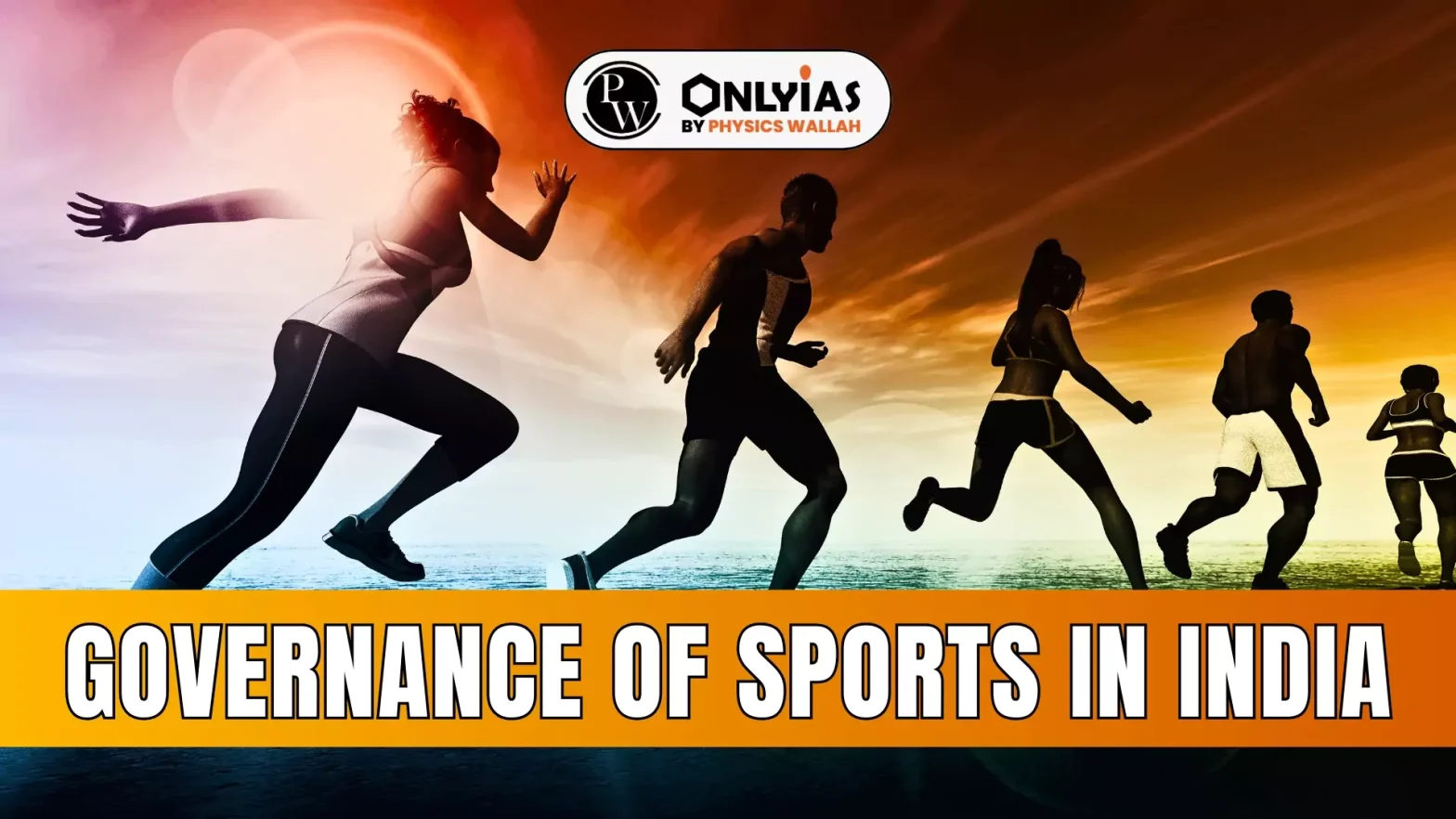Sports governance refers to the system by which sports organisations are governed in the country. It includes the process of oversight and the directions based on which decisions are made and implemented in a sports organisation.
Need for Sports Governance
Administrative Issues
- Unclear roles and responsibilities: Multiple organisations at the national, state, and district levels lead to confusion, duplication of services, and gaps in sports administration.
- Harassment charges: Senior and powerful figures in sports organizations face charges of sexual harassment, e.g., the recent protest by wrestlers.
- Lack of professionalism: Issues of fiefdom, factionalism, nepotism, and irregular elections arise due to the stronghold of politicians, bureaucrats, and businesspersons over sports organisations.
- Unethical practices: The prevalence of unethical practices, such as doping, affects the fairness of sports.
- Example: In the 2018 Commonwealth Games doping scandal, Indian athlete Sanjita Chanu, a gold medalist in weightlifting, tested positive for a banned substance, highlighting the issue of doping in Indian sports.
- Discrimination: Discrimination in sports based on race, region, or sex persists.
Example: A study by the NGO Child Rights and You (CRY) found that only 5% of girls in India have access to sports facilities. Additionally, regional bias exists, with the majority of funding and support going to athletes from certain regions.
Enroll now for UPSC Online Course
Financial Issues
- Limited funds: While the size of the Indian sports industry is around $100 billion over the last five years, the majority of funding is concentrated in cricket, leaving other sports underfunded.
- Limited central government funding: Sports is a state subject under Entry 33 of the State List, resulting in limited funding from the central government.
Cooperation and Coordination Issues
- Governance structure: Except for some sports like cricket and hockey, there is a lack of clear and functional sports governance in the country.
Example: The ban on AIFF by FIFA due to third-party influence.
- Multiple actors: Ground-level cooperation in sports is hindered by multiple stakeholders, such as state governments, district administrations, and private players.
- Transparency issues: Sports organisations hold large discretionary powers, leading to opaque decision-making and corruption.
Steps Taken
- Financial Assistance:
- The government provides direct and indirect financial assistance to sports federations, including tax benefits.
- Sports facilities are made available for hosting events by the National Sports Federation.
- National Sports Development Code of India, 2011:
- Establishes minimum standards for sports bodies to comply with in order to retain recognition from the Ministry of Sports and enjoy privileges.
- National Anti-Doping Act, 2022:
- Constitutes the National Anti-Doping Agency as a statutory body to regulate anti-doping activities in sports.
- Draft National Code for Good Governance, 2017:
- Proposes guidelines for the management and administration of sports bodies in India.
Challenges in Sports Governance
- Sports as Hobby vs. Profession:
- There is a challenge to transform sports from a hobby to a profession due to low success rates, academic pressure, and a job-oriented mindset.
- Religious Barriers:
- Some sports, like swimming and athletics, require attire that conflicts with religious beliefs regarding body coverage for women.
- Bias Toward Cricket:
- Enthusiasm and investment in sports are heavily skewed toward cricket, which attracts substantial revenue and pays cricketers well, leaving other sports underfunded.
- Lack of Implementation of PoSH Act, 2013:
- Despite the Prevention of Sexual Harassment Act, 2013, 15 out of 30 National Sports Federations have not formed the mandatory Internal Complaints Committee.
- High Performance Pressure:
- Athletes face extreme pressure to perform, and failure can lead to significant vulnerability in their careers and lives.
Check Out UPSC CSE Books From PW Store
Conclusion
To foster a stronger sports culture in India, there is a need for greater transparency, professionalism, and improved resource distribution to address existing challenges and promote inclusivity.
![]() 9 Oct 2024
9 Oct 2024

